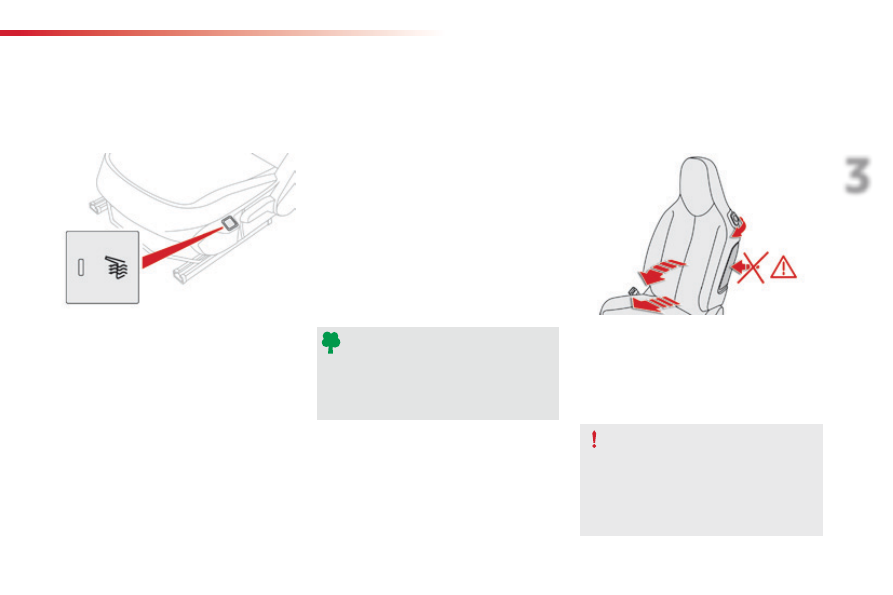Citroen C1 (2016 year). Manual - part 4

47
3
Ease of use and comfort
C1_en_Chap03_ergonomie-confort_ed01-2016
Ensure that no person or object
prevents the seat slide from returning to
its initial position.
Check that the seat belt has reeled in
correctly so as to not impede access for
passengers to the rear seats.
Heated seat control
Access to the rear seats
(3-door)
F
Pull this control toward you to fold the seat
back and move the seat forward.
When returning the seat to its initial position,
guide it back until the seat and backrest lock
into place.
With the engine running, the front seats can be
heated separately.
F
Press the control switch.
The indicator lamp comes on.
F
Pressing the switch again stops the
heating.
The temperature is controlled automatically.
The seat heating function is deactivated about
two minutes after switching off the ignition. To
reactivate it, switch the ignition on and press
the control switch again.
Switch the seat heating off as soon
as it is no longer needed, as reducing
the vehicle's electrical current demand
reduces fuel consumption.